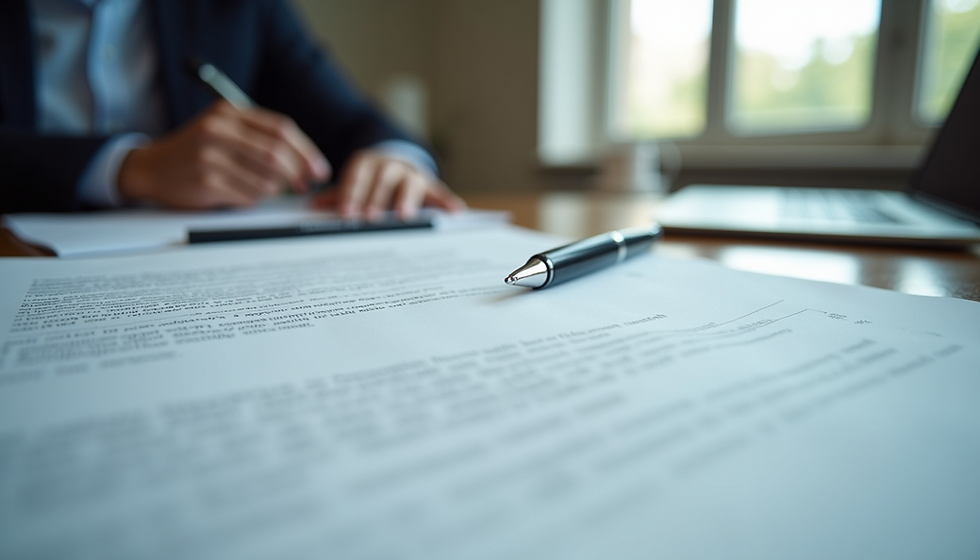Insight Briefing - After the Storm: Rebuilding After Emotional Collapse
- Joe Patuto
- Jul 11
- 4 min read
Updated: Oct 16
Experiencing an emotional collapse can feel like an unending storm. One moment you’re navigating life, and the next you find yourself overwhelmed. Rebuilding your life post-collapse requires patience, understanding, and practical steps. This blog post will guide you through the recovery process with actionable tips and insights.
Anchor and Light Long-Form Insight Blog | Facing Conflict Series (v2025.11)
For individuals navigating collapse with structure, truth, and enduring dignity.

When the Collapse Comes
Recognition
Collapse isn’t always loud. Sometimes it looks like showing up to work while your inner world is caving in. Holding it together for the kids, for your team, for your reputation until something gives.
If you’re reading this, something likely already has. This Insight isn’t about fixing you. It’s about stabilising you. Because when collapse comes — quiet or chaotic — you don’t need motivation. You need structure, containment, and clarity.
“You are not broken. You are full.”
Before any rebuild, you must first locate where the system failed to hold.
Understanding Emotional Collapse
Insight Section — The System Overload
Emotional collapse happens when your internal systems, whether they be emotional, relational, cognitive — exceed your capacity. It’s the body’s way of enforcing truth when too much has been carried for too long.
In research published by the Journal of Traumatic Stress (2022), collapse is described as an adaptive nervous system response to prolonged threat. It is not weakness, but survival. Similarly, the Australian Institute of Family Studies (2021) links chronic stress post-separation to decision fatigue, cognitive fog, and emotional withdrawal.
Collapse is not the end of you. It’s your body calling time on chaos.

The Anchor and Light Proven Process
Step One — The Collapse Map™
The Collapse Map™ helps you trace where your structure gave way — the slow leaks, the overloads, the silences.
Mapping the breakdown turns emotion into evidence. It gives shape to what felt chaotic.
Step Two — The Decision Compass™
When clarity feels impossible, the Decision Compass™ restores direction. It anchors you in values — stability, dignity, rest — rather than performance or panic.
Step Three — The Fallout Index™
After collapse, not everything can be rebuilt at once. The Fallout Index™ helps you assess what to stabilise first — sleep, finances, boundaries, or relationships.

When collapse hits, you don’t need perfection — you need anchors. The nervous system heals through rhythm, not rush.
Start here:
Sleep: Protect the hours before midnight. Darkness and quiet restore your regulation more than motivation ever could.
Food: Eat what’s stable and simple — this isn’t a diet, it’s a nervous system buffer.
Movement: Gentle walks, stretches, lifting light things — not to perform, but to circulate.
These aren’t self-care tasks. They’re stabilisers — evidence that you’re giving your system a chance to reset.

Here’s where to start:
Name one thing that opens your day. Not a miracle morning—just a repeatable cue. A hot shower. Letting the dog out. Lighting the stove.
Use low-stakes time blocks. Try “before lunch” and “after lunch” instead of hourly scheduling. Collapse hates pressure. It responds better to rhythm.
Give yourself exit ramps. Set a timer for 15 minutes. Do the thing. Stop when it dings. Structure shouldn’t feel like punishment.
The goal isn’t to control your day. It’s to locate yourself inside it.
Why Routine Feels Impossible — And What to Do Anyway
After collapse, time warps. Mornings blur into afternoons. You forget what day it is. This isn’t failure but a nervous system disruption.
Don’t build a perfect routine; build gentle rhythms that hold you without pressure.
Try this:
Name one cue that opens your day — shower, kettle, sunlight.
Use low-stakes time blocks: “before lunch,” “after lunch.” Collapse responds to rhythm, not rigidity.
Create exit ramps — set 15-minute timers. Do the thing. Stop when it dings.
Structure shouldn’t feel like punishment. It’s simply a map back to yourself.

Connection After Collapse
In collapse, even talking can feel impossible. It’s not that you don’t want help. You don’t have the energy to explain.
What actually helps:
Choose one safe person. Someone who won’t rush you to “feel better.”
Write for release. Not journaling but to discharge. Let words take pressure off your body.
Join regulated spaces. Community groups or podcasts that name what you’ve lived.
Collapse rewrites your support map. The right people don’t need your performance; they just need your presence.

Rebuilding Without Overreaching
After collapse, energy and confidence return slowly. Overreaching too soon restarts the cycle.
Instead of goals, build stabilisers:
Frictionless actions: “Get dressed by 10 a.m.” is progress.
Track patterns: Notice what helps when you rest, eat, or walk.
Build forward, not back: You’re not returning to normal — you’re reconstructing with clarity.
You’re not lazy. You’re recalibrating.
Moving Forward with Structure

Collapse is not the end. It’s the invitation to design a life that holds. The Anchor and Light Proven Process give you scaffolding tools, reflection, and professional frameworks for recovery that last.
When your system can hold, your story can move again.
Rebuilding Begins with Readiness
If you’re in collapse, the first step isn’t action — it’s clarity.
Readiness doesn’t rush you; it regulates you.
Book a Free Clarity Call to begin stabilising your next steps.
Reference List
Australian Institute of Family Studies (2021). Stress, Adjustment, and Post-Separation Recovery.
Harvard Health Review (2023). The Science of Nervous System Regulation.
Journal of Traumatic Stress (2022). Collapse as an Adaptive Response to Overload.
Frontiers in Psychology (2021). Trauma-Informed Recovery and Emotional Resilience
.
Disclaimer
This Insight Briefing is not legal, medical, or therapeutic advice. It provides educational and strategic guidance only. Always seek support from a qualified professional regarding your specific situation. Anchor and Light resources are court- and clinic-safe and can be shared with your lawyer, HR representative, or therapist for professional use.




Comments